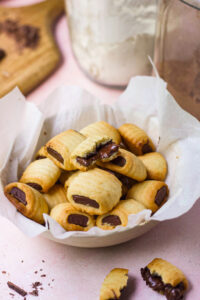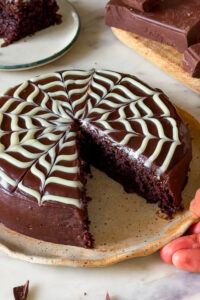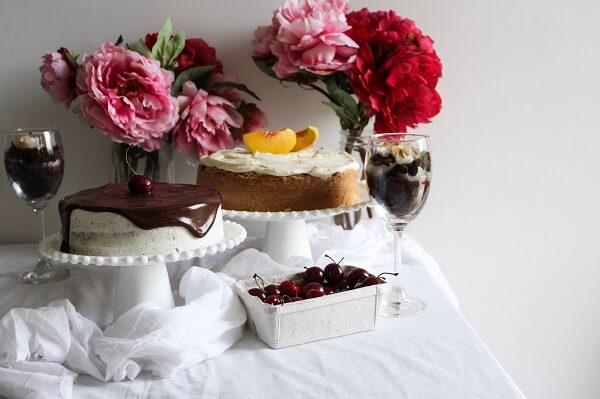Fat plays a crucial role in baking, serving several important functions. It contributes to the tenderness and moisture of baked goods by coating the flour proteins, which inhibits gluten formation and results in a softer texture.
Additionally, fat adds richness and enhances flavor, creating a more satisfying taste experience. In many recipes, fat also helps with leavening, as it can trap air when creamed with sugar, leading to a lighter and fluffier texture.
Moreover, fats such as butter or oil aid in browning, giving baked items an appealing color and flavor. Overall, fat is integral to achieving the desired consistency, taste, and appearance of baked products.
ROLE OF FAT
TEXTURE AND TENDERNESS
Fat plays a significant role in creating the desired texture in baked goods. It works by coating flour proteins, which interferes with gluten formation. Less gluten development means a more tender crumb, essential for products like cakes, cookies, and pastries. For example, in a rich, tender cake, fat helps produce a soft and moist crumb.
FLAVOUR ENHANCEMENT
Fat enhances the flavor of baked goods. Butter, for instance, not only adds richness but also a unique flavor that can elevate a cake or cookie. The melting fat carries and spreads flavor compounds more effectively, making your baked treats taste richer and more complex. Different fats, such as olive oil or coconut oil, also impart distinct flavors, contributing to the overall taste profile.
MOISTURE RETENTION
Fat helps to retain moisture in baked goods. It creates a barrier that slows down the evaporation of water, which keeps your cakes and muffins moist and tender for longer. This is particularly important in items like brownies or quick breads, where moisture is key to maintaining freshness.
LEAVENING
In certain recipes, fat contributes to leavening. When creamed with sugar, butter or other fats can trap air bubbles, which expand during baking and help leaven the dough. This process is critical for achieving a light and airy texture in cakes and cookies.
STRUCTURAL INTERGRITY
In pastries and pie crusts, fat is essential for creating a flaky texture. As fat melts during baking, it creates steam pockets that lead to a layered structure. This is why the type and amount of fat used in pie crusts or croissants can greatly affect the final result.
TYPES OF FAT AND THEIR IMPACT
Different fats have different properties and can affect your baking results in various ways:
BUTTER
Butter is a staple in baking due to its rich flavor and ability to produce a tender texture. The fat content in butter (around 80%) helps in creating a crumbly and flaky texture in pastries and cookies.
When creamed with sugar, butter also helps incorporate air into the batter, leading to a lighter texture in cakes. Additionally, the milk solids in butter can contribute to browning, giving baked goods a pleasing color and flavor.

RELATED RECIPES FROM THE BLOG
VEGETABLE OIL
This liquid fat is typically flavorless, which allows the other ingredients in a recipe to shine. It helps create a moist, tender crumb in cakes and muffins. Because vegetable oil is liquid at room temperature, it can make baked goods more tender and prevent them from drying out.
However, it doesn’t add the same flavor or richness that butter does and lacks the ability to incorporate air into batters, which can affect the texture of cakes.
RELATED RECIPES FROM THE BLOG

SHORTENING
Made from hydrogenated vegetable oils, shortening is solid at room temperature and has a high fat content. It’s used to produce a very tender texture, especially in cookies and pie crusts. Its ability to create a flaky texture in pie crusts comes from its fat content, which shortens the gluten strands in the dough.
Shortening does not contain water, which helps in achieving a crispier texture and is less likely to cause spread in cookies compared to butter.
MARGARINE
Made from vegetable oils, margarine was developed as a butter substitute. It contains similar fat content to butter but often includes additional ingredients like emulsifiers and salt to mimic butter’s flavor and texture. Depending on the formulation, margarine can affect texture and flavor differently compared to butter. It’s often used in recipes where a butter-like texture is desired without the dairy component.
HEALTH CONSIDERATION
While fat is essential in baking, it’s also worth considering health implications. Traditional fats like butter is high in saturated fats, which should be consumed in moderation. Alternatives like unsaturated oils or plant-based fats can offer a healthier profile while still contributing to desirable baking qualities.

 Hello. I'm Shivesh Bhatia, a food blogger and food stylist from Delhi, India. Welcome to Bake With Shivesh, where I'll help you create magic in your kitchens with my simple recipes.
Hello. I'm Shivesh Bhatia, a food blogger and food stylist from Delhi, India. Welcome to Bake With Shivesh, where I'll help you create magic in your kitchens with my simple recipes.
Leave a Reply